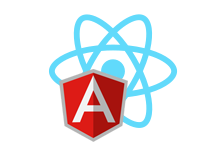Microservice Architecture
Microservices - also known as the microservice architecture - is an architectural style that structures an application as a collection of services that are:
- Highly maintainable and testable
- Loosely coupled
- Independently deployable
- Organized around business capabilities
The microservice architecture enables the rapid, frequent and reliable delivery of large, complex applications. It also enables us to evolve our technology stack quickly and safely.

Tech Stack
There are two distinct divisions within the CrossBox codebase: back-end (server-side) and front-end (client-side). We carefully picked technology stacks for both.
Back-end

Golang
Go is a statically typed, compiled programming language with memory safety, garbage collection, structural typing, and high concurrency.
Front-end

React + Angular
Angular is an application design framework for creating efficient and sophisticated apps. React is a fast rendering engine.